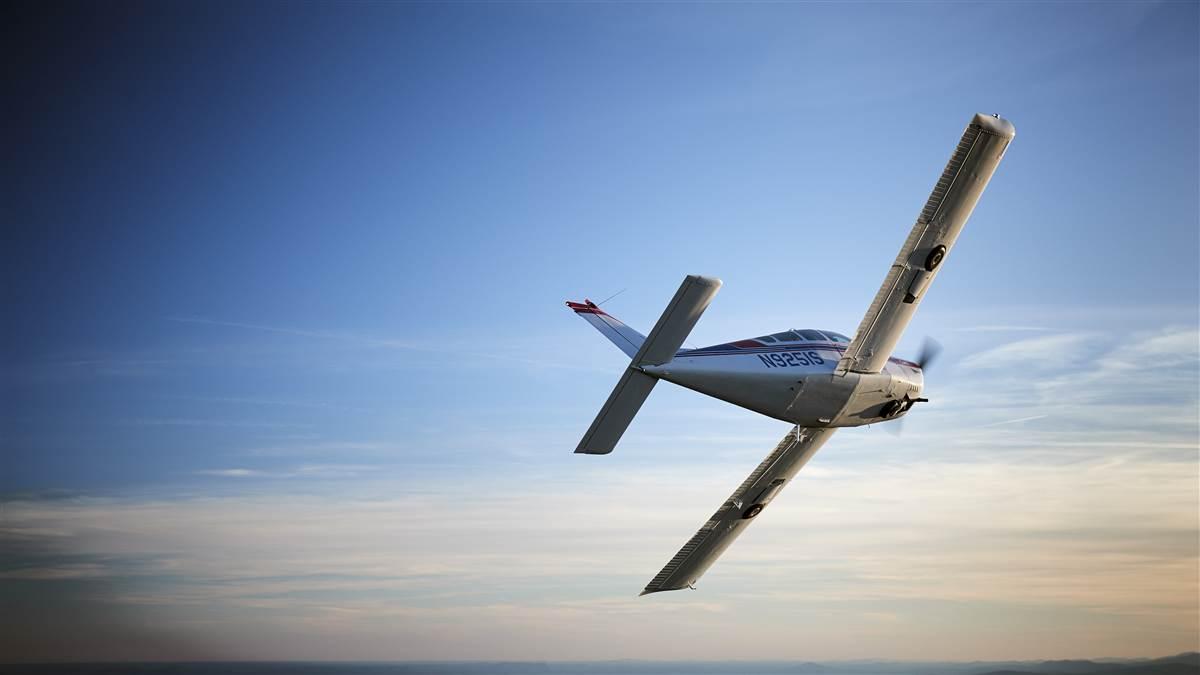Flight Training: Three Lessons from Steep Turns
The basic technique of flying an airplane in a steep turn is extremely beneficial to a novice pilot during flight instruction. The pilot discovers that airplanes are unstable in roll, the importance of doing an instrument scan before to instrument instruction, and how to fly the airplane using attitude control. The article is simple and to the point.
“How do I maintain my bank angle and speed stable in 45 degree turns?” he said seriously.
While this appears to be an easy question, it is actually pretty good. Understanding what happens in a constant altitude, constant airspeed 45° bank teaches you several extremely valuable ideas.
Assume you initiate a left turn by synchronizing your aileron and rudder. As your angle of bank grows, you must draw back on the elevator control even further. When the bank reaches 45°, you must once again synchronize your aileron and rudder movements to halt the roll and maintain a consistent bank, but you must continue to draw back on the elevator control.
It is critical that you gaze in the right direction right now. The most essential thing is to note where the horizon intersects the top of the instrument panel. A brief peek at the artificial horizon confirms that you are at 45°. That little white ball in the middle of the artificial horizon instrument will be just slightly beyond the instrument’s horizon in most planes. But take cautious not to look at that instrument.
Take a quick look at the altimeter. Is it in motion? Check to see if the ball has been centered. Look out the window straight ahead before moving any controls. Then, alter your bank angle and pitch attitude. Take another brief inspection of the instruments. Continue scanning. However, you should spend the most of your time staring out the window.
You’ll see that I left off the airspeed indicator from your scan. It makes no difference. If you maintain steady altitude and bank, your airspeed will settle and stop moving.
Even though you’re in a left turn, your aileron and rudder controls are to the right of neutral. When you turn left, your right wing creates a larger circle in the air than your left wing. As a result, it must go quicker. Because it is moving quicker, it generates greater lift. When the right wing provides more lift than the left wing, the airplane naturally tends to roll to the left. As a result, you must deflect the left aileron downward and the right aileron upward. In other words, in a left turn, the aileron control must be somewhat to the right of neutral.
You are now aware that airplanes are unstable in roll. The fact that it tries to raise its bank once it has established a bank and the airplane is turning indicates this. As a result, it is up to you to keep the bank from growing.
You may not see it, but you have a little pitch up angle of attack. This is due to the fact that your plane must lift 141 percent of its weight. P-factor is caused by an increased angle of attack. P-factor must be compensated for in a steep bend, just as it must be compensated for in a climb. That’s why you need to press the right rudder pedal. So there you are, turning left despite maintaining the rudder and aileron to the right of neutral. Steep bends to the right are not perfectly symmetric to steep curves to the left. The P-factor remains. In most cases, you will find yourself pressing on the right rudder pedal in a right turn even if your aileron control is somewhat to the left of center.
Steep turns, like any other type of flying, need using the controls to alter the airplane’s attitude. You should not adjust your controllers to any predetermined location, but merely to modify your mindset.
The most important thing to take away from tight turns is to operate the airplane by managing its attitude rather than adjusting its controls to some predetermined position. In comparison, the facts that you ultimately put the controls in a position opposed to the direction of turn to maintain a constant bank and that an airplane is unstable in roll are merely odditiesArticle Search.
Mastering steep turns is a vital and valuable talent to have. It is also a necessary activity when learning to fly an airplane.

